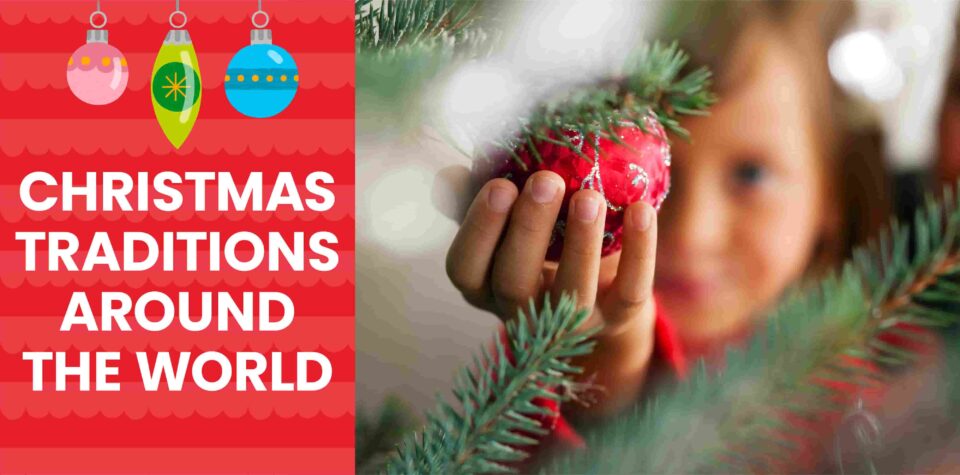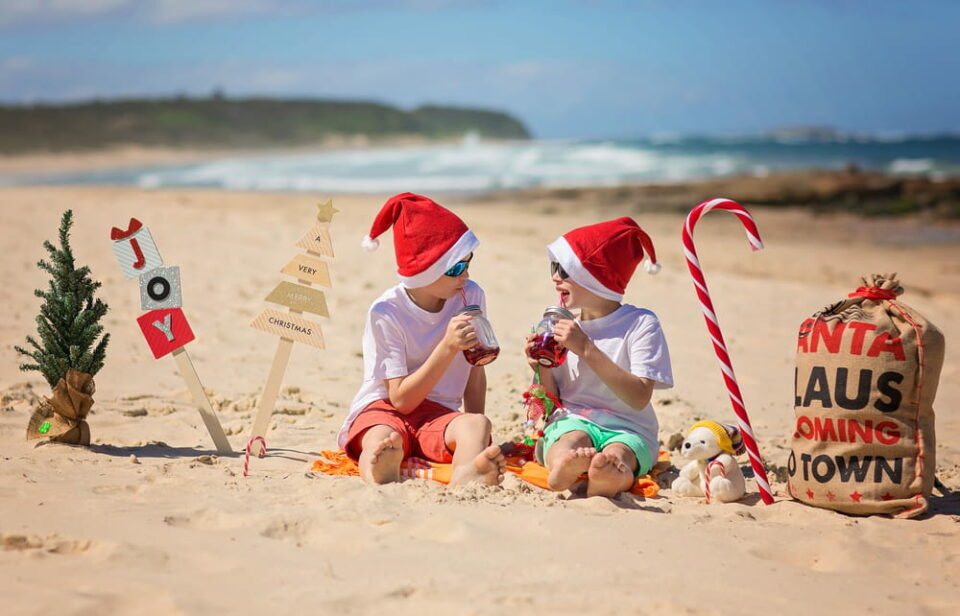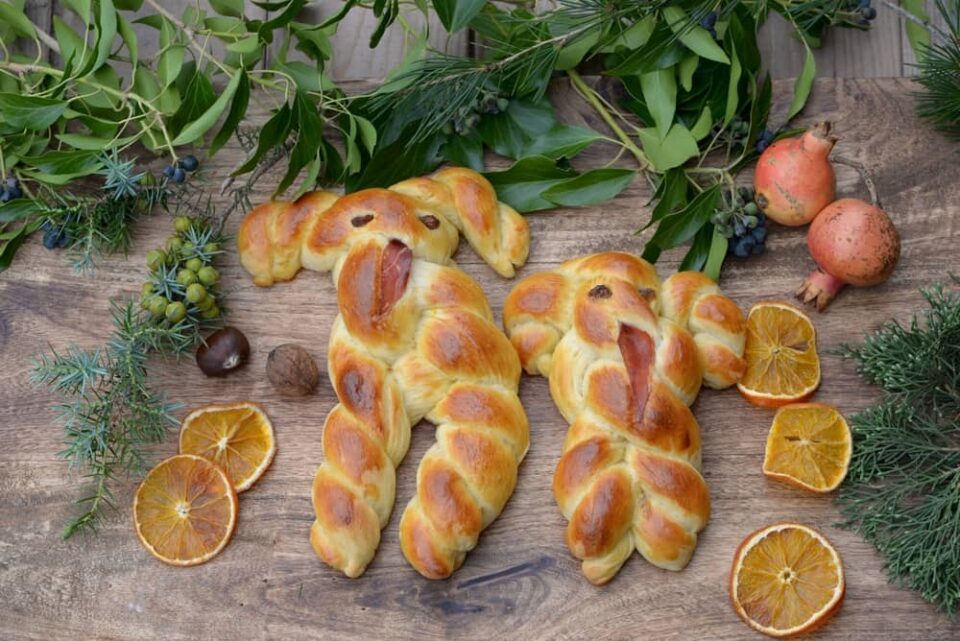
Learn How Christmas Is Celebrated around the World
The holiday season is a time of year filled with love, cheer, and traditions of all shapes and sizes. From sparkling decorations and lights to the scent of delicious treats baking to gifts topped with bows, festivity is everywhere you turn. Whatever the particulars, each family has a special way of celebrating.
Christmastime is also a wonderful opportunity to teach your children how people from other places and cultures celebrate the holiday. Let’s go on a global adventure to learn about Christmas traditions around the world. Who knows—maybe one will become a part of your festivities!

’Tis the Season to Learn
Christmas is one of the most widely celebrated holidays in the world. Statistics show that approximately 45% of the global population participates in some sort of Christmas celebration, and the day is an official holiday in over 160 countries. It’s especially popular in the United States, where 93% of people celebrate Christmas every December.
For Christians, Christmas is a religious holiday celebrating Jesus’s birth. But it’s also a time to give gifts and celebrate with friends and loved ones, even for many people who aren’t Christian. In many places around the world, Christmas takes on a whole new meaning—like in Japan, where Christmas Eve is considered a romantic holiday, similar to Valentine’s Day in the U.S.
7 Holiday Traditions from across the Globe
Simbang Gabi: Philippines
Think Christmas celebrations start early in America? If so, take a trip to the Philippines, where September is the first of four months spent decorating with Christmas lights and parols (star lanterns). As Christmas Day nears, Simbang Gabi, or “dawn mass,” begins.
Beginning on December 16 and continuing until Christmas Eve, churches across the predominantly Roman Catholic archipelago open their doors at the break of dawn or earlier to invite people to worship. Young children, teenagers, adults, and elders gather as early as 4 a.m. to partake in Simbang Gabi. Most Catholics in the Philippines attend all nine days of masses, and many believe it will lead to their wishes being granted. After mass, food stalls line the streets to sell yummy treats like puto bumbong (purple rice cake) and bibingka (coconut rice cake).

Summertime Christmas: Australia
The sun sure isn’t shy around Christmastime in Australia. While many people around the world play in the snow, this country in the Southern Hemisphere is in the heat of summer. Many Aussies happily trade the yule log for a fan, swap roast turkey for a seafood feast, and trade out reindeer for kangaroos. It’s common for fish markets to have lines out of their doors on Christmas Eve and for families to celebrate Christmas outside camping, at beach-side barbecues, or lounging riverside.
Though Santa may swap his thick red coat for swimming trunks, Christmas in Australia shares its roots with celebrations in the United Kingdom. This means evergreen trees still pepper town squares and Christmas carols fill the warm night air.

Carp for Christmas: The Czech Republic
This bottom-feeder fish doesn’t get a good rap in some parts of the world, but in the Czech Republic (along with other Central European nations, like Poland and Slovakia), carp is a delectable dish served for Christmas Eve dinner. Carp is a freshwater fish often bought live days before the Christmas feast. In some homes, the carp is left to swim in the bathtub to keep it extra fresh until it’s time to prepare dinner! And people love carp at Christmastime not just for its taste. Carp scales hidden underneath plates will bring good financial fortune, and some people even carry a scale or two in their wallets all year.

Krampus: Germany, Austria, and Hungary
Many children in the U.S. and U.K. learn that if they’re naughty, Santa Claus will leave them a lump of coal instead of presents. This potential punishment might spoil a lovely Christmas day, but it’s nothing compared to the consequences facing kids in Germany, Austria, and Hungary. There, kids make sure to stay on Santa’s good list to avoid Krampus, a frightening-looking half-goat character who punishes misbehaving children at Christmastime. On the night of December 5, known as Krampusnacht (“Krampus Night” in German), people even dress up like Krampus and parade through the streets.
The evening may be a fright for some, but it’s followed by St. Nicholas Day on December 6, when Santa fills stockings and delivers small gifts.
Night of the Radishes: Mexico
Like the Philippines, Mexico is predominantly Roman Catholic, and Christmas is a holiday celebrated by most people there throughout December and well into January. The celebrations start with Día de la Virgen de Guadalupe (“Day of the Virgin of Guadalupe”) on December 12, commemorating the story of the Virgin Mary appearing to an indigenous peasant, Juan Diego, in 1531. The party continues until Día de la Candelaria (“Candlemas,” or the feast day commemorating the presentation of the infant Jesus at the temple) on February 2.
Amid all these celebrations, the residents of Oaxaca City in southern Mexico also have unique regional traditions. On December 23, Oaxaca celebrates La Noche de los Rábanos, or the “Night of the Radishes.” People carve radishes into sculptures depicting religious scenes, animals, or anything else they can think of.
La Noche de los Rábanos began in 1897 when Oaxacan mayor Francisco Vasconcelos created an official contest for the city’s holiday market. The tradition has continued ever since (and now includes a grand prize of 12,000 pesos), giving Oaxacan kids and adults a unique way to show off their creative talents.
The Gift-Giving Witch: Italy
Children across the globe anxiously await Christmas gifts from Santa every year. But in Italy, the jolly man in red is just one of many gift-givers who visit during the holidays. Italian children receive presents from San Nicolò di Bari on December 6, Santa Lucia on December 13, and Babbo Natale (Santa himself) on December 25. Just as the holiday season ends, children get one final visit from La Befana: the gift-giving witch. Legend says the three wise men from the Christmas story visited Befana on their journey to visit Baby Jesus. According to the tale, Befana offered them a place to sleep, and the wise men invited her to join them to see the baby. Befana refused, saying she was too busy with housework, but regretted it as soon as they left. Now, each year on the night of the Epiphany (January 6) she flies on her broomstick looking for Baby Jesus and leaving gifts for good children.

Roller Skating to Church: Venezuela
Let’s finish our Christmas tour with another trip to a warm-weathered locale. Venezuela is a South American country that sits just north of the equator, which means it stays balmy throughout the year. While other countries may have a “white Christmas” covered in snow, Venezuelans usually celebrate the holiday with temperatures around 79℉ (26℃). It’s much too warm for snow, so sledding and ice skating outdoors are out of the question.
So what do Venezuelans do instead? In the capital city of Caracas, it’s tradition to wear a pair of roller skates and glide to church for Christmas mass. Roller-skating on Christmas is so popular in Caracas that the government bans cars from the streets on Christmas morning to make room for all the skaters.

How Do You Celebrate?
Whether you decorate a Christmas tree, light candles in a menorah or kinara, or eat dishes passed down from your ancestors, the holidays are a time to gather with family members, friends, and other loved ones and partake in your favorite traditions.
Do you have a special family tradition for Christmas? Do you know of a fun way other countries celebrate? Tell us about it on Instagram!

